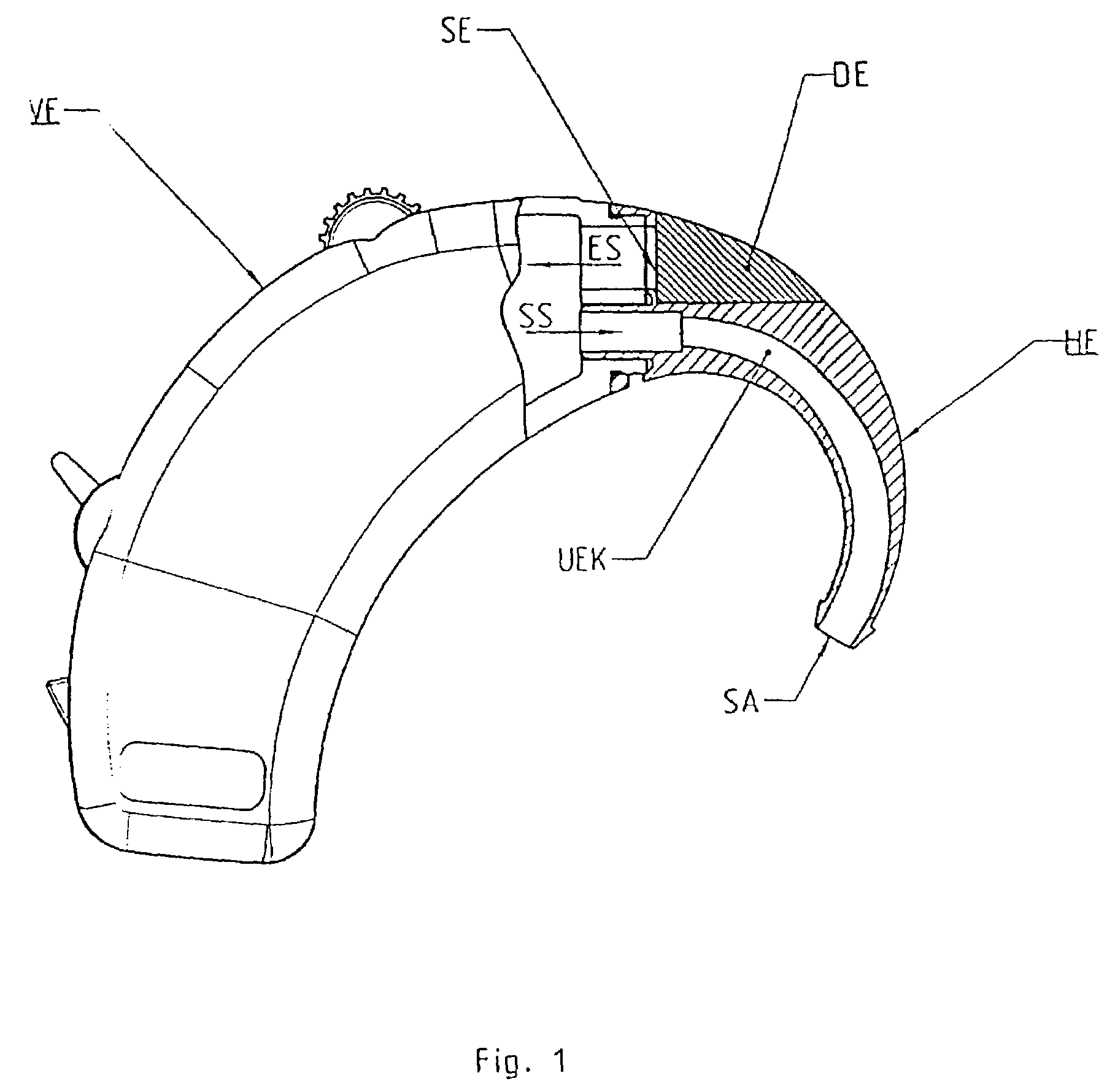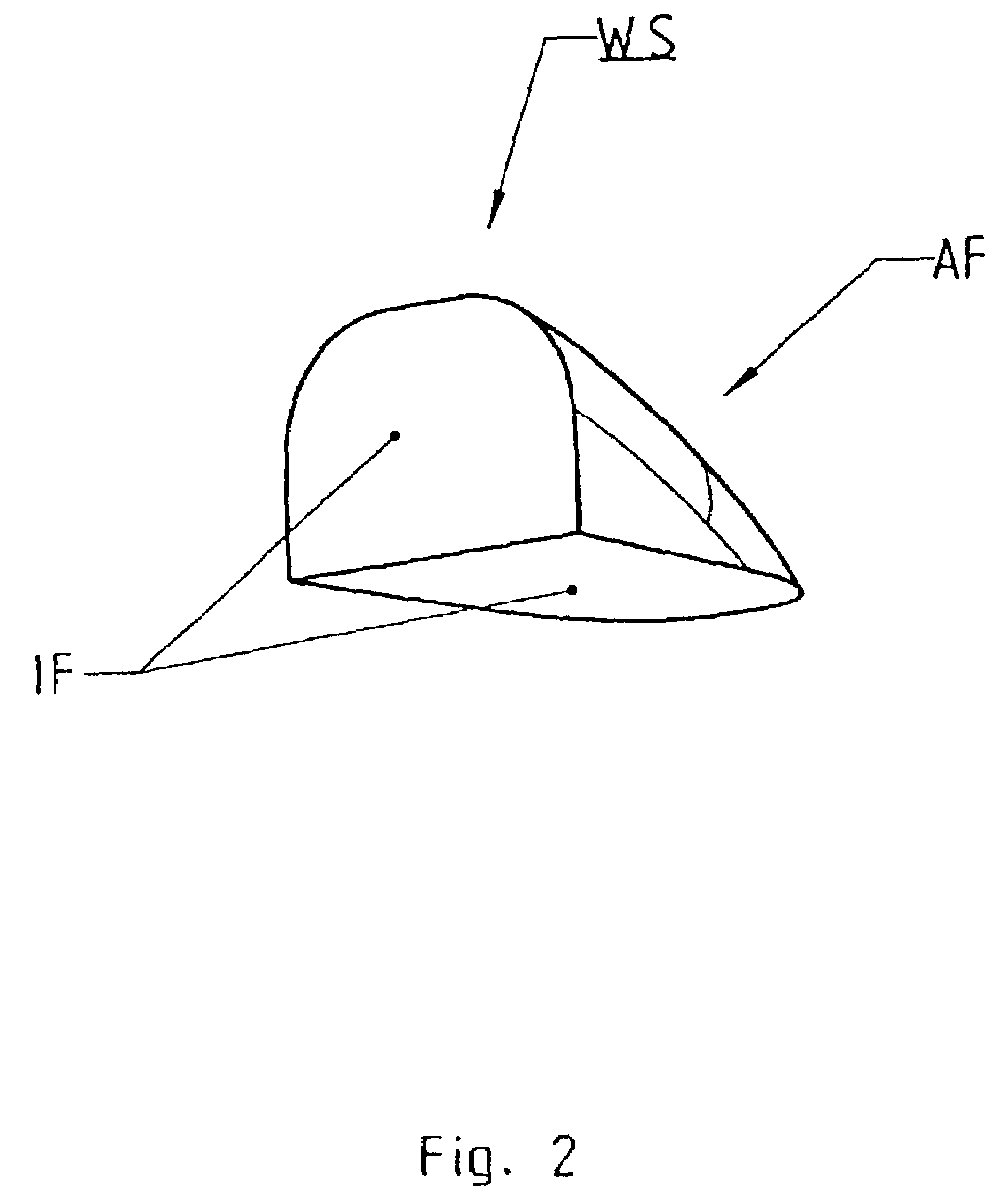Hearing aid
a technology for hearing aids and hearing aids, applied in the field of hearing aids, can solve problems such as the danger of deviation from the normal acoustic behavior, and achieve the effect of reducing the generation of spurious acoustic signals
- Summary
- Abstract
- Description
- Claims
- Application Information
AI Technical Summary
Benefits of technology
Problems solved by technology
Method used
Image
Examples
Embodiment Construction
[0019]FIG. 1 shows a longitudinal view of a hearing aid of the invention consisting of an amplifier VE and a hook HE. The hook HE is detachably connected to the amplifier VE, that is, the hook HE or the amplifier VE may be arbitrarily exchanged or replaced.
[0020]The amplifier VE substantially electronically processes the acoustic signals (see arrow ES) which, following processing, are transmitted to the hook HE (see arrow SS), i.e. to an acoustic transmission duct UEK contained therein. The hearing-aid's amplifier VE need not be elucidated herein because the objective of the invention foremost is the design of the hook HE.
[0021]It is emphasized however that the invention is not restricted to hearing aids consisting of two parts, namely an amplifier VE and a hook HE. Instead the invention also applies particularly to hearing aids consisting of a single housing part. Moreover the invention applies as well to in-ear hearing aids as to behind-the-ear hearing aids.
[0022]As regards the pr...
PUM
 Login to View More
Login to View More Abstract
Description
Claims
Application Information
 Login to View More
Login to View More - R&D
- Intellectual Property
- Life Sciences
- Materials
- Tech Scout
- Unparalleled Data Quality
- Higher Quality Content
- 60% Fewer Hallucinations
Browse by: Latest US Patents, China's latest patents, Technical Efficacy Thesaurus, Application Domain, Technology Topic, Popular Technical Reports.
© 2025 PatSnap. All rights reserved.Legal|Privacy policy|Modern Slavery Act Transparency Statement|Sitemap|About US| Contact US: help@patsnap.com



